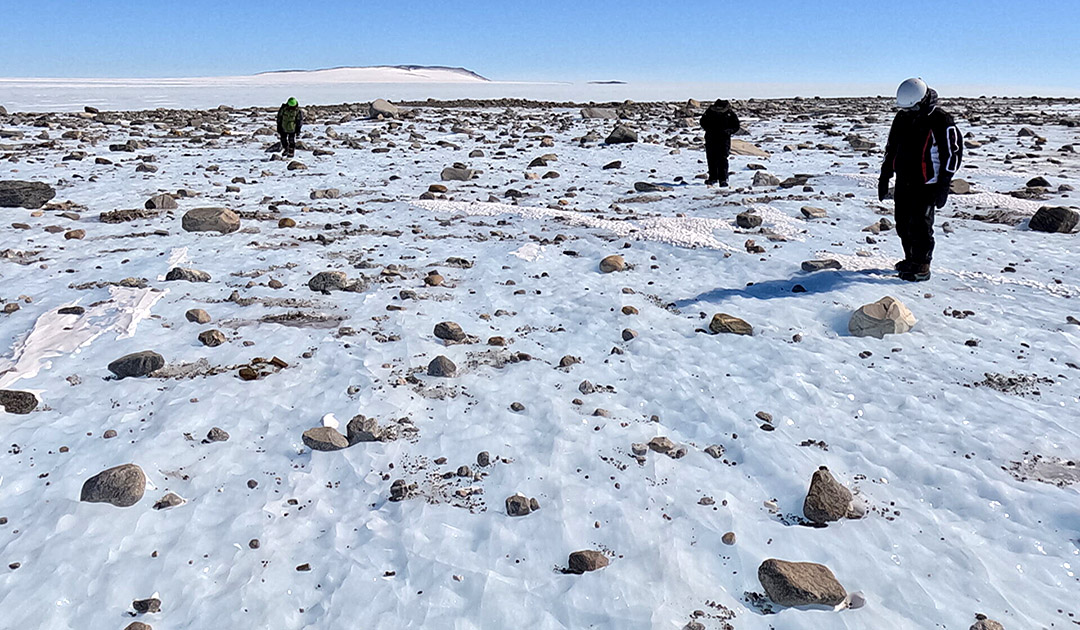
An international team of researchers has discovered five meteorites in Antarctica, including one that, weighing 7.6 kilograms, is among the largest ever found on the icy continent. The five meteorites recovered by the team were sent to Belgium and are being analyzed at the Royal Belgian Institute of Natural Sciences. Meanwhile, sediment that may have contained tiny micrometeorites was divided among researchers for study at their institutions.

Antarctica, remote from any civilization and icyy cold, is not exactly the ideal place to work. On the road with snowmobiles and sleeping in tents does not contribute to any vacation feeling either. During the mission, in temperatures of minus 10° Celsius, the team covered dozens of kilometers. However, it is one of the best places in the world to look for meteorites. The black space rocks stand out clearly against the snow-covered surface. The expedition started in December 2022 and lasted until mid-January 2023.

The starting point for the meteorite expedition was the Belgian Princess Elisabeth Antarctica Station on Utsteinen, in East Antarctic Queen Maud Land. The expedition team explored the Nils-Larsen blue ice zone, about 60 kilometers from the station. In doing so, they concluded that, as predicted, it is an effective meteorite zone that needs further study.
“The most impressive find is a meteorite weighing 7.6 kg,” said Maeda of the Université Libre de Bruxelles “The object comes from the asteroid belt and probably crashed into the ice of Antarctica several tens of thousands of years ago.” According to Maeda, it is a “common chondrite,” and the meteorite contains a lot of metal (H-type).

Maria Valdes, a scientist at the Field Museum and the University of Chicago, estimates that of the roughly 45,000 meteorites recovered from Antarctica in the past century, only about a hundred are that size or larger. “Size doesn’t necessarily matter with meteorites, and even tiny micrometeorites can be incredibly scientifically valuable,” Valdes says, “but of course it’s rare and really exciting to find a large meteorite like this.”
The researchers were the first to explore potential new meteorite sites, which were mapped using satellite imagery and GPS coordinates by Veronica Tollenaar, a doctoral student in glaciology at ULB. “However, we also had to deal with the fact that the reality on the ground was much more difficult than the beauty of the satellite images,” Tollenaar said.

Tracking meteorites is a surprisingly undemanding endeavor. Although state-of-the-art satellite imagery was used to guide the researchers to specific locations, Valdes said the researchers would simply drive slowly, at 5 to 10 kilometers per hour, across the ice fields on snowmobiles, looking for black stones on the white surface. “There are a lot of rocks, which look deceptively like meteorites. We call these meteorite faults,” Valdes told NPR. “But what we’re looking for, first and foremost, is a telltale fusion crust. This is a glassy crust that forms all over the meteorite when it enters our atmosphere at high velocity and melts easily. And secondly, we can also see if it is very heavy for its size.”
Heiner Kubny, PolarJournal
More on the topic





